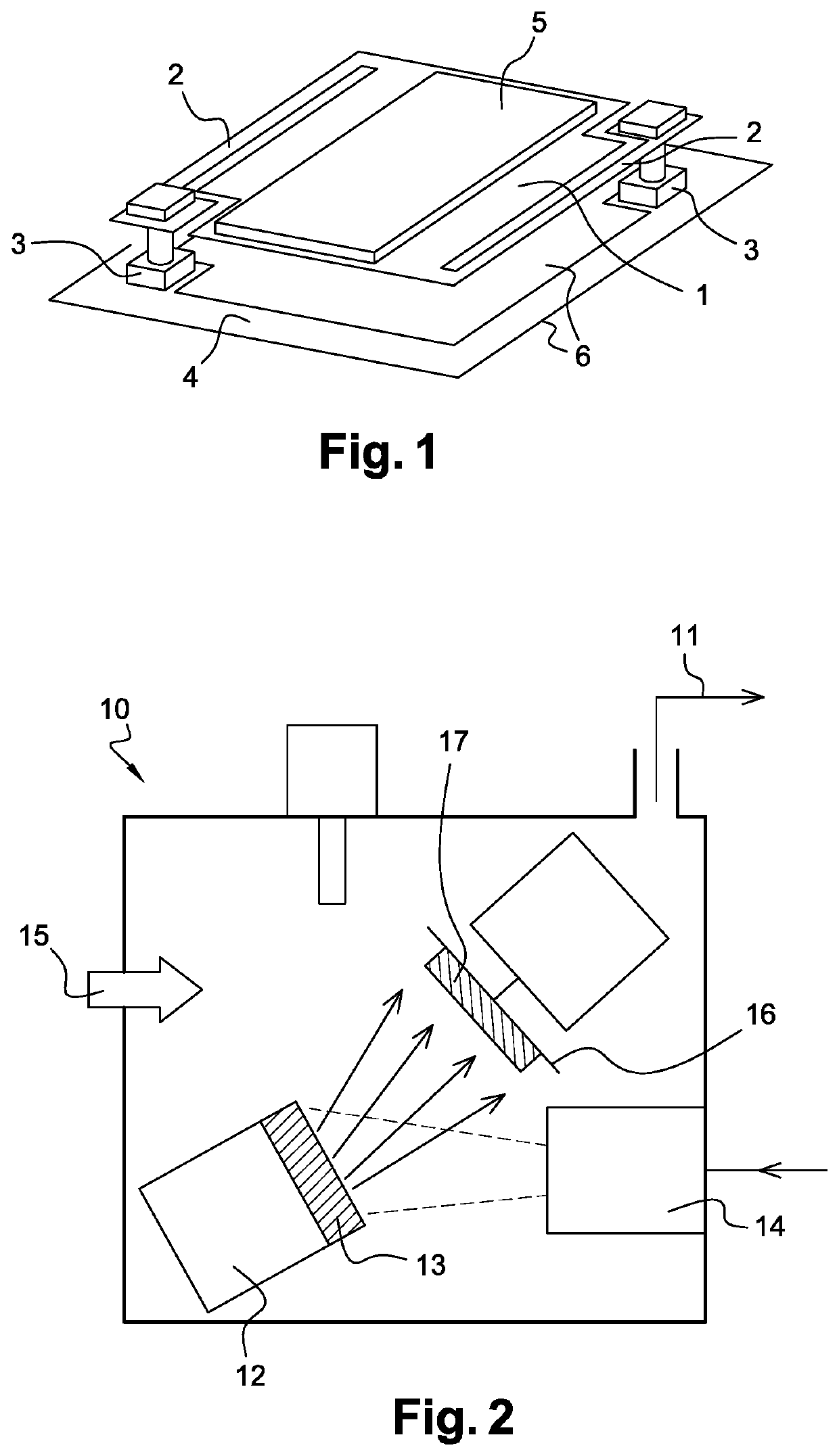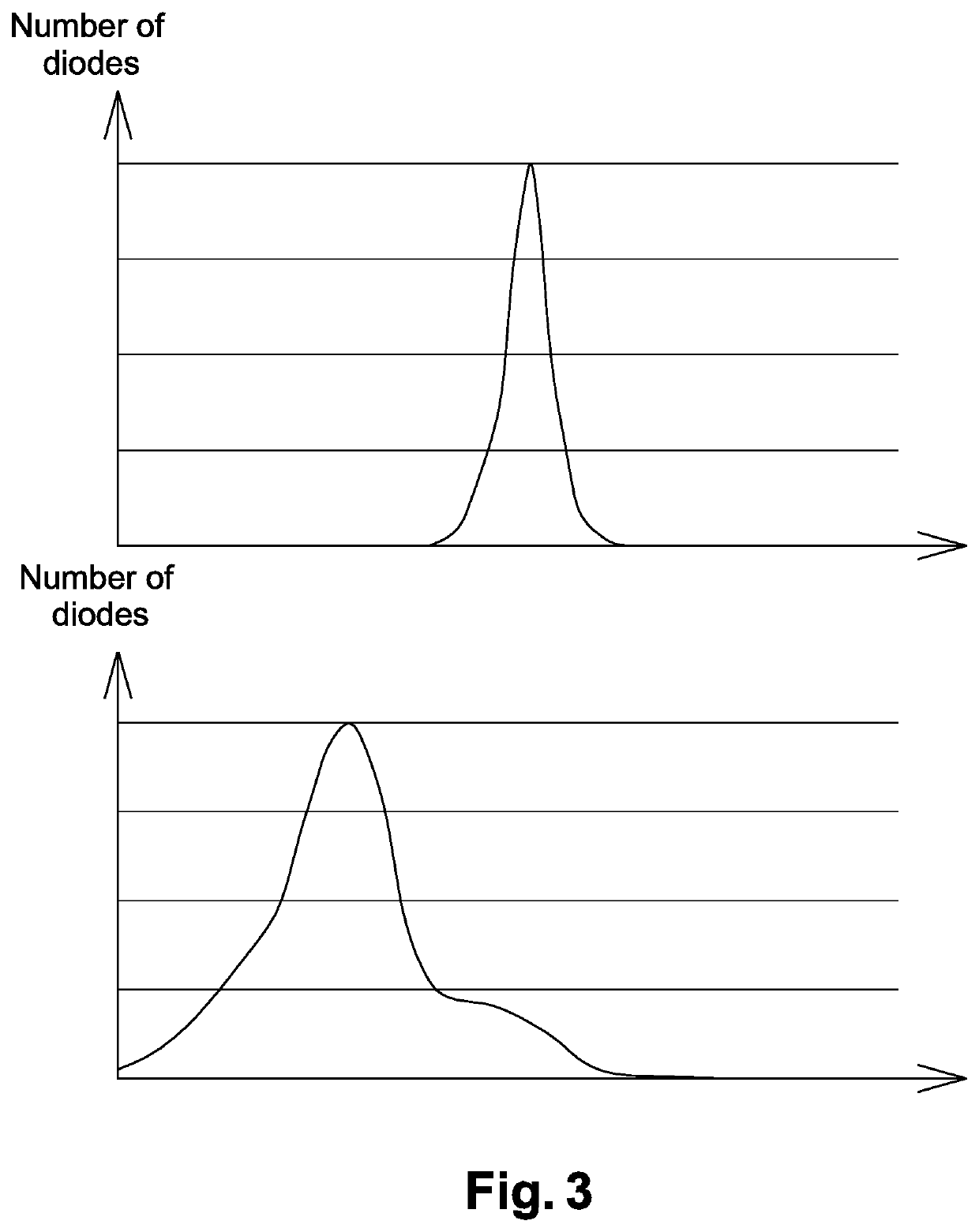Detector of electromagnetic radiation and in particular infrared radiation, and process for producing said detector
a detector and electromagnetic radiation technology, applied in the field of infrared imaging, can solve the problems of increasing the electric resistance rb, affecting the response of high resistivities, and no longer enabling the guarantee of detector characteristics at a sufficient level, etc., and achieve the effect of increasing the lifetime of the detector
- Summary
- Abstract
- Description
- Claims
- Application Information
AI Technical Summary
Benefits of technology
Problems solved by technology
Method used
Image
Examples
Embodiment Construction
[0077]An elementary bolometric detector has been shown in FIG. 1. Such a detector is basically formed of a membrane (1) suspended via thermal insulation “arms” (2) and pillars (3), ensuring the electric connection with the substrate (4).
[0078]The membrane (1) comprises a thin film of thermistor material (5) on the most part of its surface, oriented opposite a window transparent to infrared radiation (and typically made of silicon or of germanium).
[0079]Advantageously, and to optimize the performance of the elementary detector, a metallic reflector film (6) is affixed under the suspended membrane and at an adequate distance therefrom, to form a resonating cavity and thus optimize the absorption of the infrared radiation.
[0080]The thermistor material (5) is made of a thin film of vanadium oxide VOx, having a typically thickness in the range from 20 to 200 nanometers and having a resistivity in the range from 6 ohm·cm to 50 ohm·cm. These resistivity values typically correspond to a val...
PUM
| Property | Measurement | Unit |
|---|---|---|
| temperature | aaaaa | aaaaa |
| resistivity | aaaaa | aaaaa |
| temperature | aaaaa | aaaaa |
Abstract
Description
Claims
Application Information
 Login to View More
Login to View More - R&D
- Intellectual Property
- Life Sciences
- Materials
- Tech Scout
- Unparalleled Data Quality
- Higher Quality Content
- 60% Fewer Hallucinations
Browse by: Latest US Patents, China's latest patents, Technical Efficacy Thesaurus, Application Domain, Technology Topic, Popular Technical Reports.
© 2025 PatSnap. All rights reserved.Legal|Privacy policy|Modern Slavery Act Transparency Statement|Sitemap|About US| Contact US: help@patsnap.com



